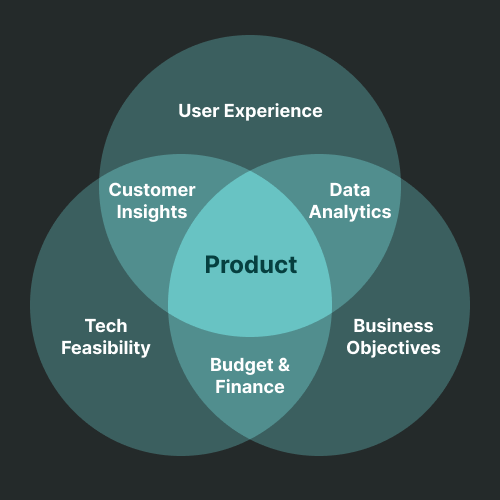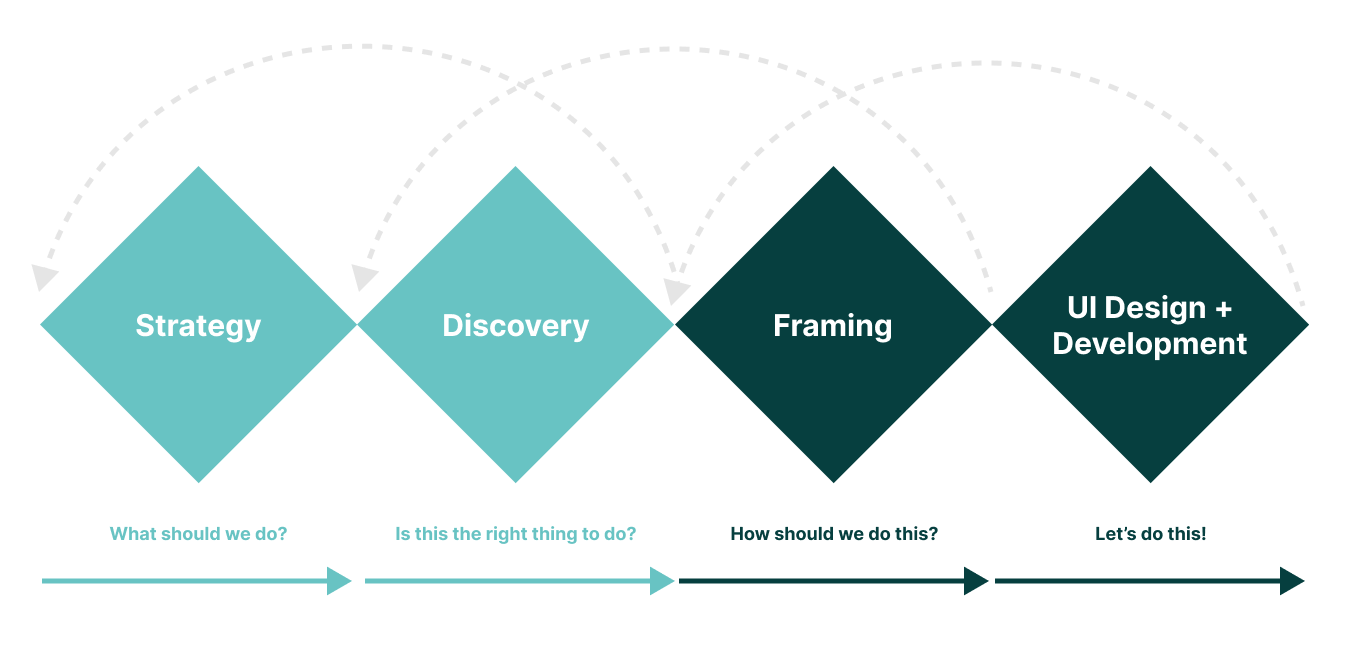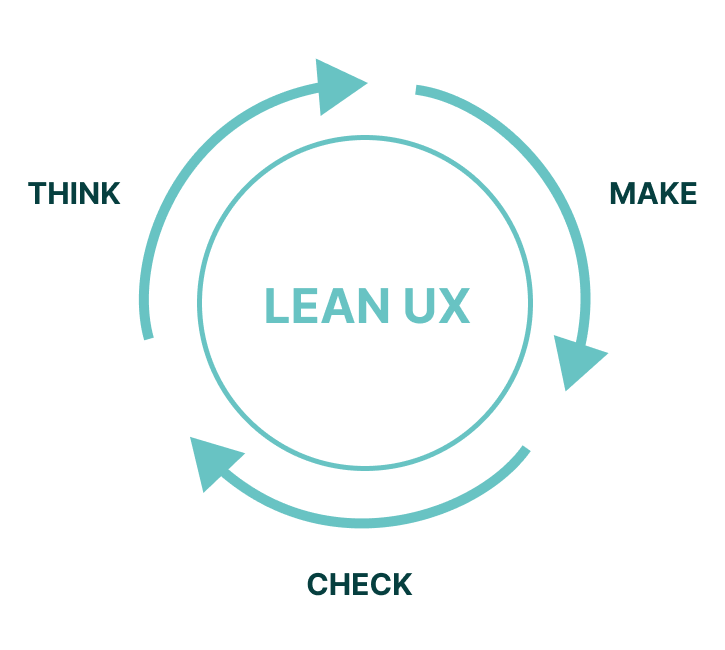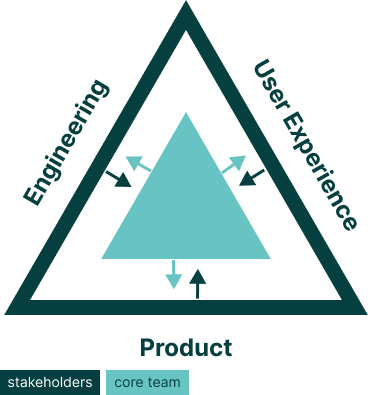I leverage user-centric approach when supporting product teams. User-Centered Design is a Design Thinking approach to problem-solving that combines business objectives, user needs, and tech feasibility in order to strategically deliver the right thing in the most efficient manner possible, versus the alternative of delivering something based on assumptions over data and insights. Empathizing with users at the core of the product design process delivers the most value and least risk.

Philosophy & Approach
Support Options
There is no "one size fits all" process when it comes to product development. There are many factors that need to be considered prior to support:
- Maturity and experience levels
- Product team size
- Adequate research and alignment on what that means
- Business objectives
- Engagement models
- Definitions of roles, functions, and ownership
- External commitments and obligations with set milestones and dates
- Current state of the product
Depending on those items there are options for consideration.
Discovery and Framing
Often referred to as "Double Diamond" or D & F - the more indepth approach used for product development. Best used in net new scenarios, if there is a significantand lack of research or extremely complex workflows that need to be solved, this is the ideal process to implement.

Lean UX and Agile Development
A lean approach leveraging a full-stack Product/UX Designer embedded with a scrum team. Best leveraged for iterative releases where research needs are minimal, when product teams have committed to aggressive launch dates or when you have a small team that needs to cover a lot of ground quickly. Lean UX does not mean we bypass user feedback - instead, you are working from assumptions and quickly testing to validate by any means necessary.

Primary Experience Functions
These are how I define five unique functions that could support product teams:
- User Experience Strategist (UXS) ensures that business goals and priorities are people (user) focused at inception and helps bridge the gaps between the what, why and how phases of the design thinking process at all levels.
- User Experience Research (UXR) provides insights into users’ perspectives, contexts, and abilities to use products and services.
- User Experience Designer (UXD) ensures the functionality of a product meets end users’ needs (all users), from their perspective.
- User Interface Designer (UID) is the look and feel of a digital product or application that visually appeals to users. (Most often confused with a UX Designer and/or a Product Designer).
- Product Designer ("AKA Full-Stack UX Designer") ensures existing product needs are met as they undergo iterations and growth. Their primary focus is to deliver the best solution in the most efficient manner possible. A product designer is experienced enough to cover research and design needs as teams work toward the right solution.
Collaboration & Communication
Balanced Teams
Efficient and productive product teams require a balanced structure consistenting of user experience, product ownership and engineering. Collaboration and communication are critical keys to success.
